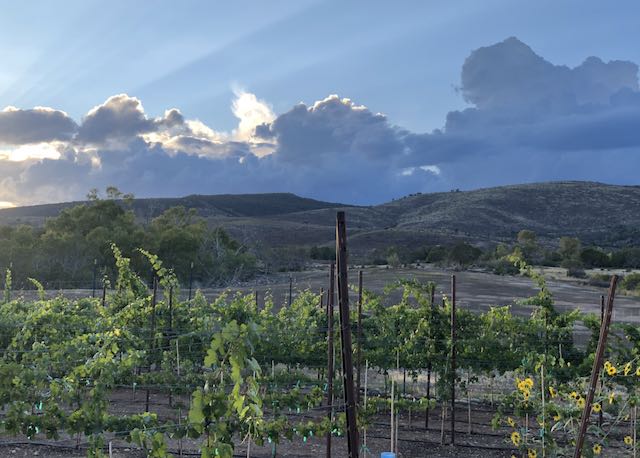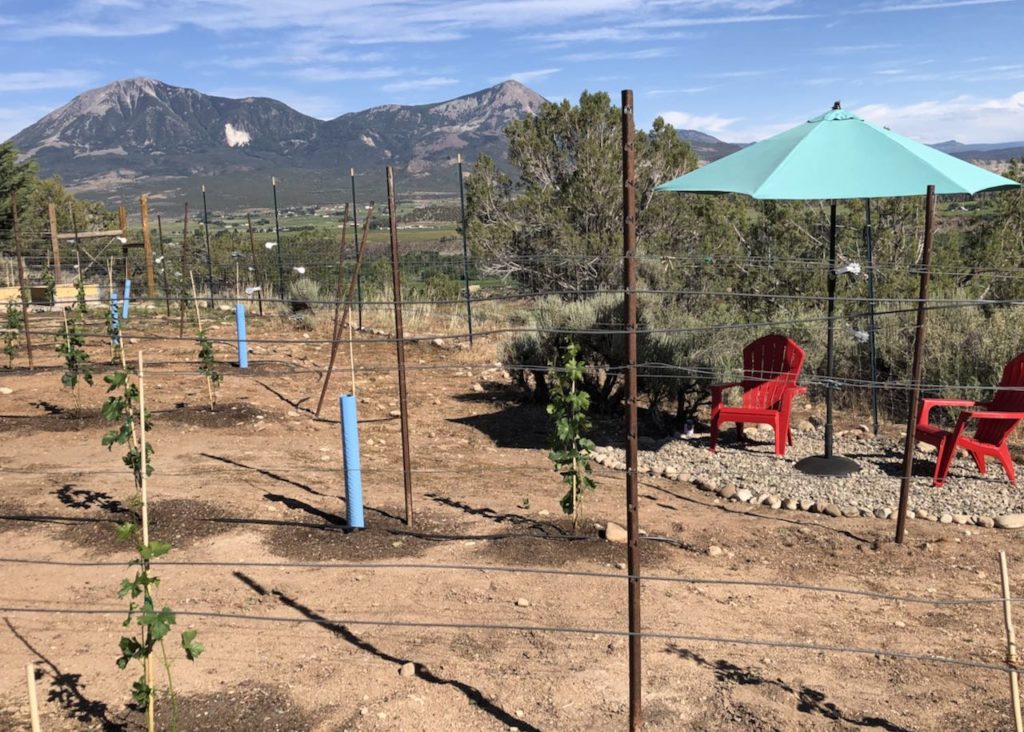
2nd Year Vineyard - Part II
One of the greatest English poets of the twentieth century W. H. Auden once remarked, “In times of joy, all of us wished we possessed a tail we could wag”. This was my frame of mind as spring gave way to summer. Completion of spring tasks as highlighted in Year 2 Part I, set the stage for a summer of pruning vines to the trellis, an activity I immensely looked forward to. Why? Because at some point during the growing season, my vineyard of 110 vines would actually begin to look like a vineyard.
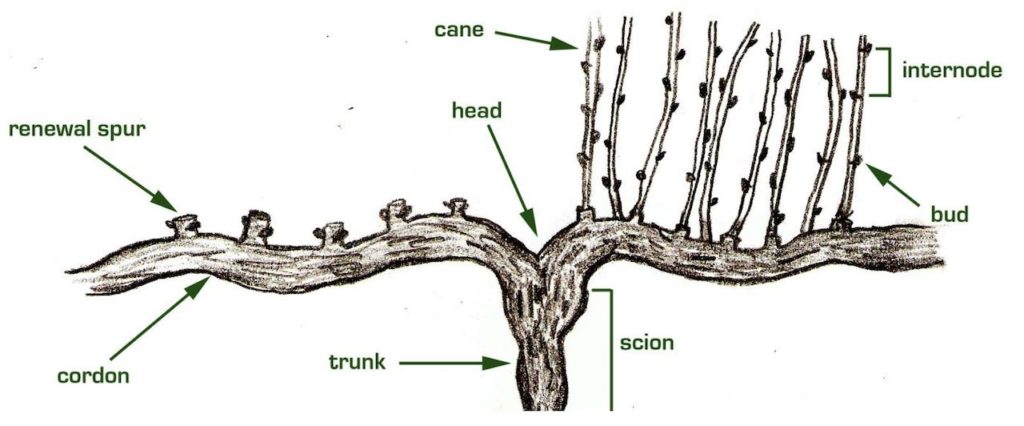
The illustration above portrays cordon vertical shoot training, with spurs to the left (previous year’s canes pruned to start a new season), and canes not yet pruned to spurs, along the cordon to the right. I modified the approach by promoting the growth of two trunks per vine. One trunk is trained as a cordon to the left and the other trunk to the right. The cordons are trained along what is called the growth wire, approximately 3 feet above the ground. In this setup, as part of the grapes’ lifecycle, vines produce flowers turning into grapes, along the lower portion of the canes. The image below taken in mid-July captures the state of a typical pruned vine in my vineyard utilizing this approach (the leaves obscure the two trunks).
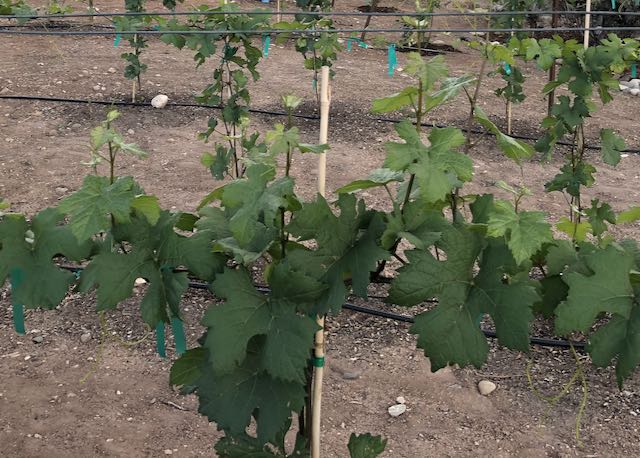
Why promote vertical growth using this pruning method? Because spreading the vine canopy upwards and out promotes a greater level of leaf photosynthesis healthier for the plant, leaving the grapes to hang freely receiving sun and discouraging mildew and rot. The canopy arrangement also assists other vine maintenance tasks, providing easy access for the removal of unwanted shoots, leaves, and grape clusters.
During the course of the summer, I continued pruning as the canes grew upward. There are two sets of parallel wires above the lower growth wire, approximately positioned at 4.5 and 6.5 feet. As the canes grew, I’d guide them between the upper parallel trellis wires, which serve to support the canes and help them retain vertically oriented growth. I’d also keep guiding and tying the cordons as they grew horizontally along the growth wire. If small grape clusters appeared, they’d be clipped off. The focus for second-year vine growth continues to be vine and root development, not grapes production.
In a much-needed development, the valley’s weather pattern began to change in June. The first five months of the year were exceedingly dry, with the vineyard receiving 1.2 inches of rain. For the remainder of the year, the vineyard experienced an excess of an inch of rain each month (November was an exception clocking .3 inches). June had 1.3 inches, and July had 1.65. Though much of July’s rain occurred as one event, a downpour of 1.5 inches in 35 minutes. The event didn’t adversely affect the vineyard, the water soaked the soil with the remaining quickly running off. The torrent of rain did adversely affect other property attributes leaving narrow gullies along the side of our hill and filling the ditch along our drive with mud. Within a few weeks, I arranged for a contractor with a backhoe to clear the ditches and regrade the drive. The year’s rainfall had its greatest impact in September, October, and December, providing the vines with wonderful moisture as they went to sleep for the winter.
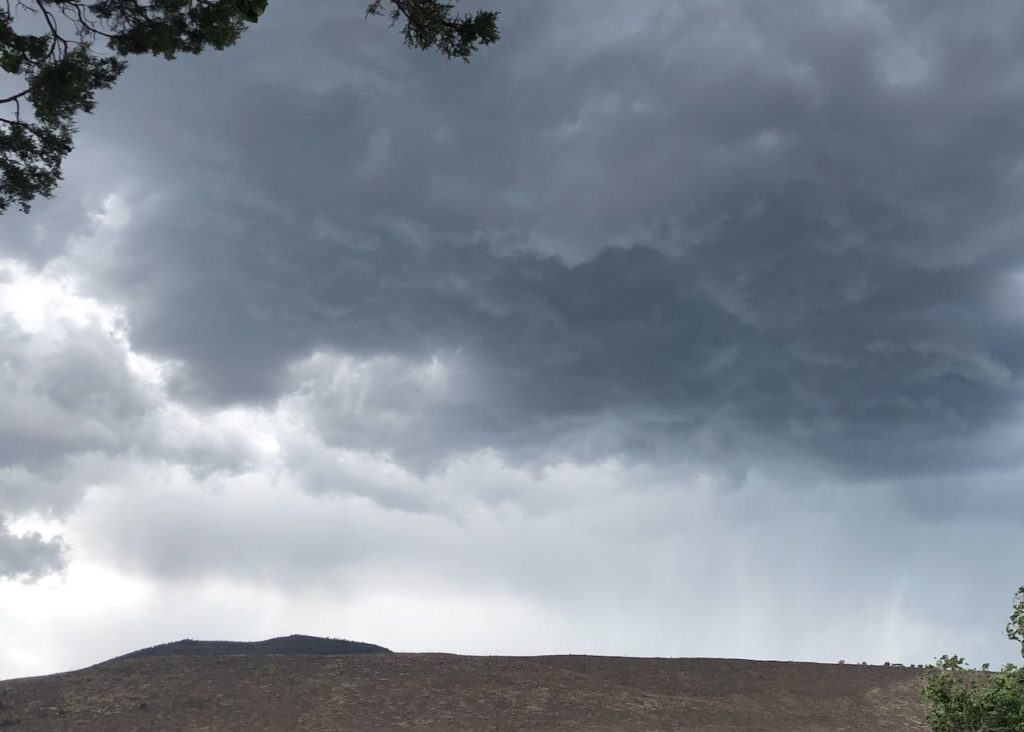
Even with rain, irrigation is always required in our semi-arid climate. We have one source of water, a spring. The spring has plenty of capacity but the water delivery system doesn’t. The 1,500-gallon cistern is not the limiting factor, the solar pump pushing the spring water up the hill 75′ at 1.25 gallons a minute is the limiting factor. The vineyard’s three zones use more water than the pump can put into the cistern, affecting domestic availability and usage if not managed. It was a summer of water management.
When attending the Cedaredge AppleFest in early October, I stopped by the Empowered Energy Systems booth to discuss the possibility of increasing our solar array, and at a minimum doubling the pump output. They were very helpful, I’m hopeful this story will evolve toward a solution in 2023.
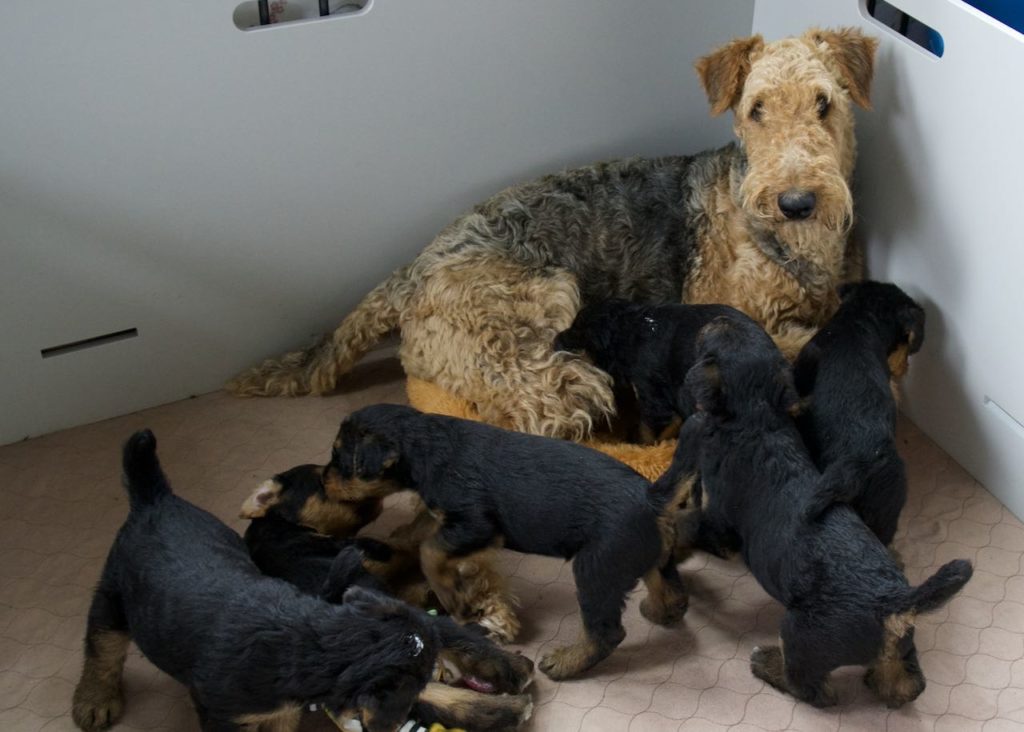
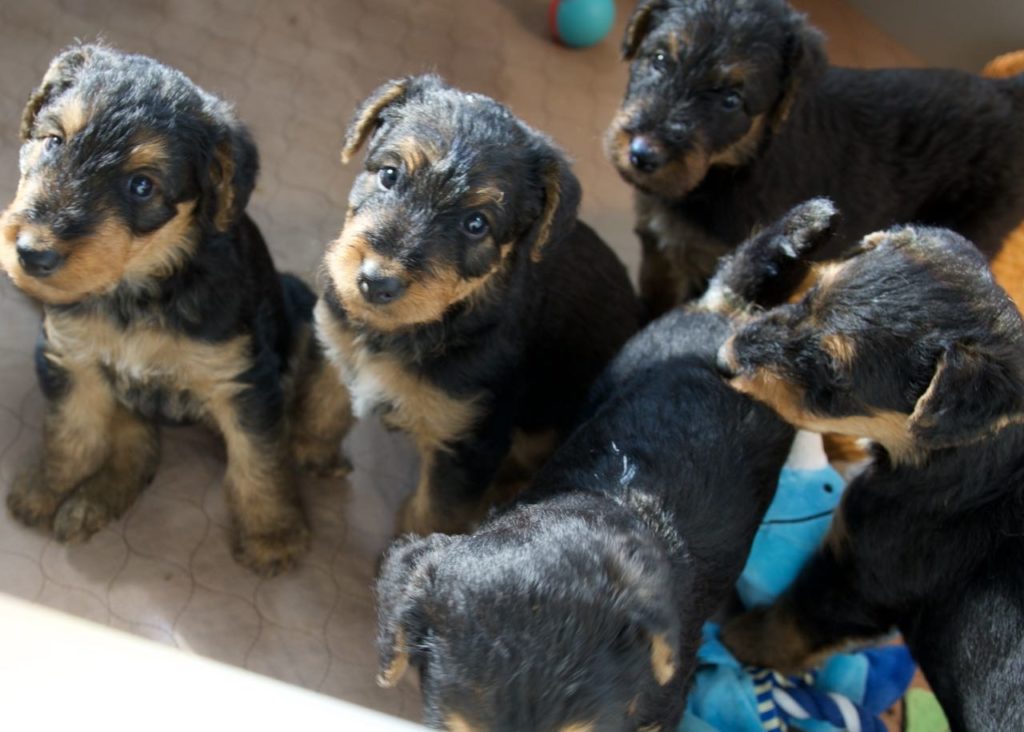
The previous summer our 10-year-old Airedale Princess Leia passed from cancer. She lived her best life in the valley. I was hesitant to quickly jump into the “find another dog” game. I waited till the following spring to begin a search. We always have Airedales—a story for another blog. Due to the waning pandemic, rescue Airedales were almost non-existent. I reached out to a few conscientious breeders I’ve worked with in the past. Rhae Drijber of Fyrebrick Airedales outside of Lincoln (driving distance!) was expecting and we were welcome (we had had another Airedale of Rhae’s 20 years before). Come September, we had our new 12-week puppy, Bella Rose. Acclimating her to the vineyard was job number one.
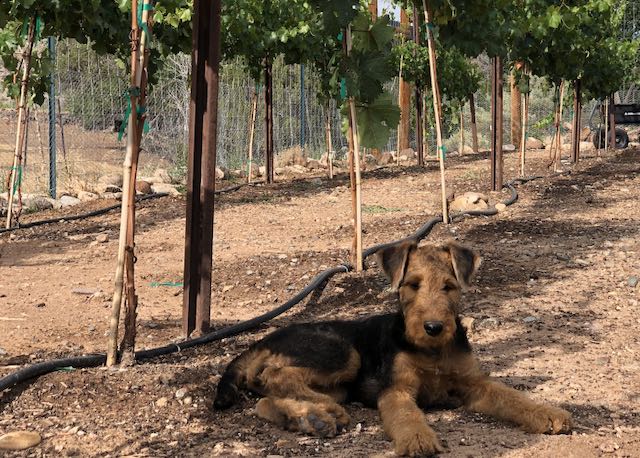
With Bella in hand and plenty of moisture in store, it was time to begin thinking about putting the vineyard to bed for the season. In the latter part of September through October, I kept busy processing grapes to wine (another blog) but I kept my eye on the coming cold. I mounded soil around the bottom of the few first-year vines and smaller second-year vines. I emptied the irrigation lines. Everything was set, and believe it or not, no “buts” here. A wonderful season to raise a glass of wine to. Be sure to visit 2023’s winemaking chronicles for a month-to-month review of vineyard activities.
